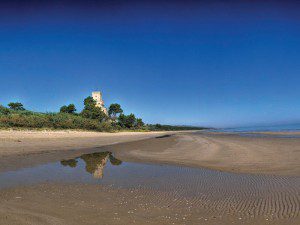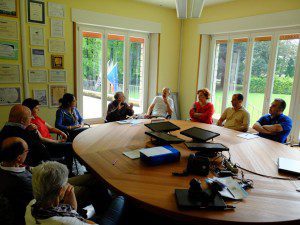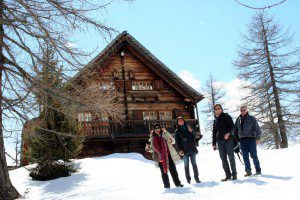The ECST in Italy: which are the reasons for success?
Pollino National Park, Italy © Stefania Petrosillo
Stefania Petrosillo, Charter Expert in Italy, in charge of the Charter for Federparchi-Europarc Italia during 2008-2015, shared her considerations about the Italian experience on the European Charter for Sustainable Tourism in Protected Areas. This post is also available in Italian.
In few years, the European Charter for Sustainable Tourism in Protected Areas has gained great importance in Italy, and it is now considered by Parks, Regions and the Ministry of the Environment a very useful tool for the governance of protected areas.
Several factors have made this success possible, and, in order to hold this very good result, it will be necessary in the next future to reinforce these elements and think carefully on some critical issues.
The evolution since 2001
In the late nineties, Alpi Maritime Regional Park decided to be one of the seven pilot areas in Europe to test a new instrument: the European Charter for Sustainable Tourism. In 2001 it became the first Charter Park in Italy, shortly followed by Sibillini National Park and Adamello Brenta Natural Park. A few years later, the Lombardia Region decided to support and to finance Charter’s application for four of its regional protected areas.
A major change occurred in 2008: Federparchi and Europarc Italia (that were, until then, two separate entities) merged to form a single association. Afterwards, the Charter became a priority working area within the Italian section that started to promote the instrument among Italian Parks, Regions and the Ministry of Environment.
Consequently, the number of parks interested in the Charter began to grow up quickly. Some Regions (Puglia and Marche) decided to follow the example of Lombardia sponsoring the Charter amongst their regional parks. In 2011, the Italian Ministry of Environment signed with Federparchi-Europarc Italia the first of a number of agreements, providing financial support for the certification of national parks and sustaining seminars and study on the Charter. In 2012, the Regional Reserve of Monte Rufeno (in Lazio) became the n. 100 Charter Park in Europe.

Marine Protected Area of Torre del Cerrano became the first Charter MPA in Europe © Parks.it
In 2013, Federparchi-Europarc Italia received the “Special Tourism Award” for its “proactive engagement in support of the Italian protected areas in the implementation of Charter”.In 2014, the Marine Protected Area of Torre del Cerrano became the first Charter MPA in Europe. In 2015 two parks (Adamello Brenta Nature Park and Regional Park Dune Costiere) certified the first sustainable partners (Charter Phase II) in Italy.
The reasons for success
Today the Italian network can count on 29 certified Areas and many others are candidates.
Why is the Charter so successful within the context of the Italian protected areas?
Firstly, it should be noted that almost all of the Italian parks are inhabited territories. For that reason, dialogue, collaboration and consensus of local communities become essential. The Italian law already requires official mechanisms for public participation. The Charter, as a volunteer certification scheme with defined scope and clear objectives, could offer them a very concrete important support. Therefore, the Charter responds to a real need felt by the Italian Park management authorities.

Dolomiti Bellunesi National Park © Stefania Petrosillo
Italy is a tourist destination of excellence. The tourism market is very important for the country, but the institutional actors involved in this sector are many and often disconnected. Precisely for this reason it is essential to develop the coordination between decision-makers, in order to favour the development without endangering the “capital” (the cultural and natural heritage). The Charter methodology could be an excellent answer for this requirement.
Furthermore, the internationality of the Charter is a very attractive element for the Italian Parks that perceive the charm and potential to receive a European-wide recognition.
Definitely, the role played by Federparchi-Europarc Italy in promoting the Charter has been a key for the success. In these years, the Section has coordinated and animated the Italian network, and spread information on Charter among parks and institutions. Moreover, protected areas receive technical assistance from Federparchi, with high-quality consultancy up to the candidature and, after being awarded, support for monitoring, training and updating.
Also the commitment of the Ministry of Environment and of the already mentioned Regions has been strategic and crucial in the growth of the number of certified areas. All this shows as the Charter in Italy has been promoted, managed and perceived as a national network program, and not just as an individual path taken by individual Parks.
One peculiarity of the Italian experience concerns the private sector: private businesses, in fact, are involved from the very beginning of the Charter journey, even in phase I. In many cases, they have proved being a strong point of Italian Charters.
Criticalities
Of course, together with so many positive aspects, there are also weaknesses and risks that should be mentioned.
First crucial aspects concern coordination, planning and real possibility to implement in five years the identified strategy and action plan. Politics changes and strategy switches characterizing so often the national, regional and local overview in Italy inevitably have a serious impact on protected areas. In some cases, it is difficult to consistently engage public authorities’ representatives (which instead are essential for the coordination of the policies on the field) in the Forum, along the five years.
In close connection with this, a really critical issue is the perennial uncertainty about the amount of public funding that will be allocated each year for protected areas.

Ossola Nature Park, Italy © Stefania Petrosillo
In some cases, an element of weakness may arise from park’s motivation, that can start the Charter journey because asked by the Ministry or the Region, or in order to receive a European diploma, but without really subscribing the Charter idea and method. Moreover, a sensitive moment occurs when a new president or director is nominated: he has to be able to fully understand and estimate the importance of the Charter process that he has not seen being developed from the beginning. In these cases, the Charter risks to be perceived just as one project among many others to be entrusted to a single official of the staff, and not as a working method to be adopted by the entire Park Authority. When this happens, Charter can lose all its value and the entire work done with the Forum may be frustrated.
Conclusions, in perspective
Looking ahead, it is crucial to encourage and support the hard work and commitment of many parks presidents, directors and officers who, despite of all difficulties, are carrying on their work with the Charter with enthusiasm and excellent results.
Dialogue between private sector and park authorities will likely increase, also through the Charter phase II. However, it is fundamental that the phase I was solid. Park authority and public bodies have to guarantee a clear stable policy framework, within privates can engage working towards an environmental management of their businesses and developing activities promoting and respecting the protected area.
The national networking is a strength of the Italian system to be preserved, also through joint projects. At the same time, it will be strategic to continue emphasizing and enhancing the European nature of the Charter, as also affirmed in the Europarc Federation Strategy 2020. Much is already being done and much will be necessary to do, in terms of European projects, promotion, technical seminars, events, lobby towards European and international institutions, involvement of private business in the European network, etc. In this sense, networking will be essential, with reciprocal commitment of the Federation, of national sections and of all Charter protected areas.
In conclusion, the Charter in Italy is an experience of great interest, to be maintained, improved and made even more visible at local, national and at the European level.